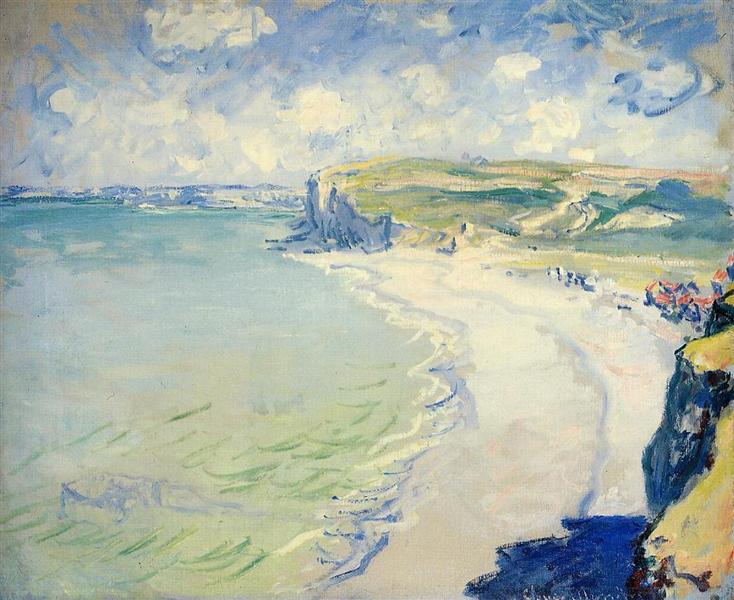Beskrivning
Claude Monet painted Pourville Beach in 1882 as one of the most significant stages of the Impressionist movement. Capturing the luminous essence and ephemeral movement of the sea, this work is a testament to Monet's mastery in the representation of light and colour. Monet chose Pourville, a beach in Normandy, as a setting to explore his deep connection with nature and the atmosphere of the place. This geographical choice not only reflects his love for the Norman landscape, but also his desire to capture the effect of natural light on the elements of the environment.
Looking at the composition, one can notice that the painting is organized in a way that invites the viewer to experience the immensity of the coastal landscape. The horizon line is positioned so that the sky and sea seem to merge, with the ocean stretching out beyond the visible. Blue and green hues predominate in the water, while the sky, in a display of blues, shades of gray, and hints of white, suggests a dynamic atmosphere that suggests the movement of clouds and wind. This treatment of color is a distinctive characteristic of Monet, who often used a vibrant palette to communicate not only visual reality, but also the sensory experience of being in a specific place.
A fascinating element of Pourville Beach is the inclusion of human figures, which add a subtle narrative to the composition. Although the figures are not the main focus of the work, their presence contributes to the idea of the relationship between humans and nature. A few silhouettes, possibly bathers, can be seen scattered across the sand, suggesting the daily activity of coastal life. These figures, although almost abstract, add a sense of scale and action to the landscape, allowing the viewer to imagine the joyful and relaxed atmosphere of a summer day at the beach.
The use of loose touch and rapid brushstroke technique are evident in this work, a signature of the Impressionist technique. Monet, like many of his contemporaries, sought to capture the fleeting in nature. In The Beach at Pourville, the unity of the work lies in how the style of the painting aligns with the subject matter of changing nature. The movement of the waves, the breeze that seems to make the figures' clothing flutter, and the rapid transformation of light all come together in a kind of visual dance that transforms the everyday into an aesthetic spectacle.
This painting reflects not only Monet's technique but also the broader context of Impressionism, in which artists began to break away from academic conventions, seeking a more authentic representation of visual experience. The Beach at Pourville is emblematic of this quest and can be seen alongside Monet's other contemporary works, such as Impression, Sunrise or The Railway Station at Argenteuil, where landscapes become a vehicle for light, colour and personal emotion.
The work is also a reminder of Monet's love of nature and his ability to articulate fleeting moments through his technique. Pourville Beach is not only a coastal scene, but also a reflection on human perception and the constant relationship between art and the environment. As a whole, this piece invites the viewer to immerse themselves in a world where the landscape becomes visual poetry, manifesting the union between the ephemeral nature of life and the perpetuity of art.
KUADROS ©, a famous painting on your wall.
Hand-made oil painting reproductions, with the quality of professional artists and the distinctive seal of KUADROS ©.
Painting reproduction service with satisfaction guarantee. If you are not completely satisfied with the replica of your painting, we will refund 100% of your money.

